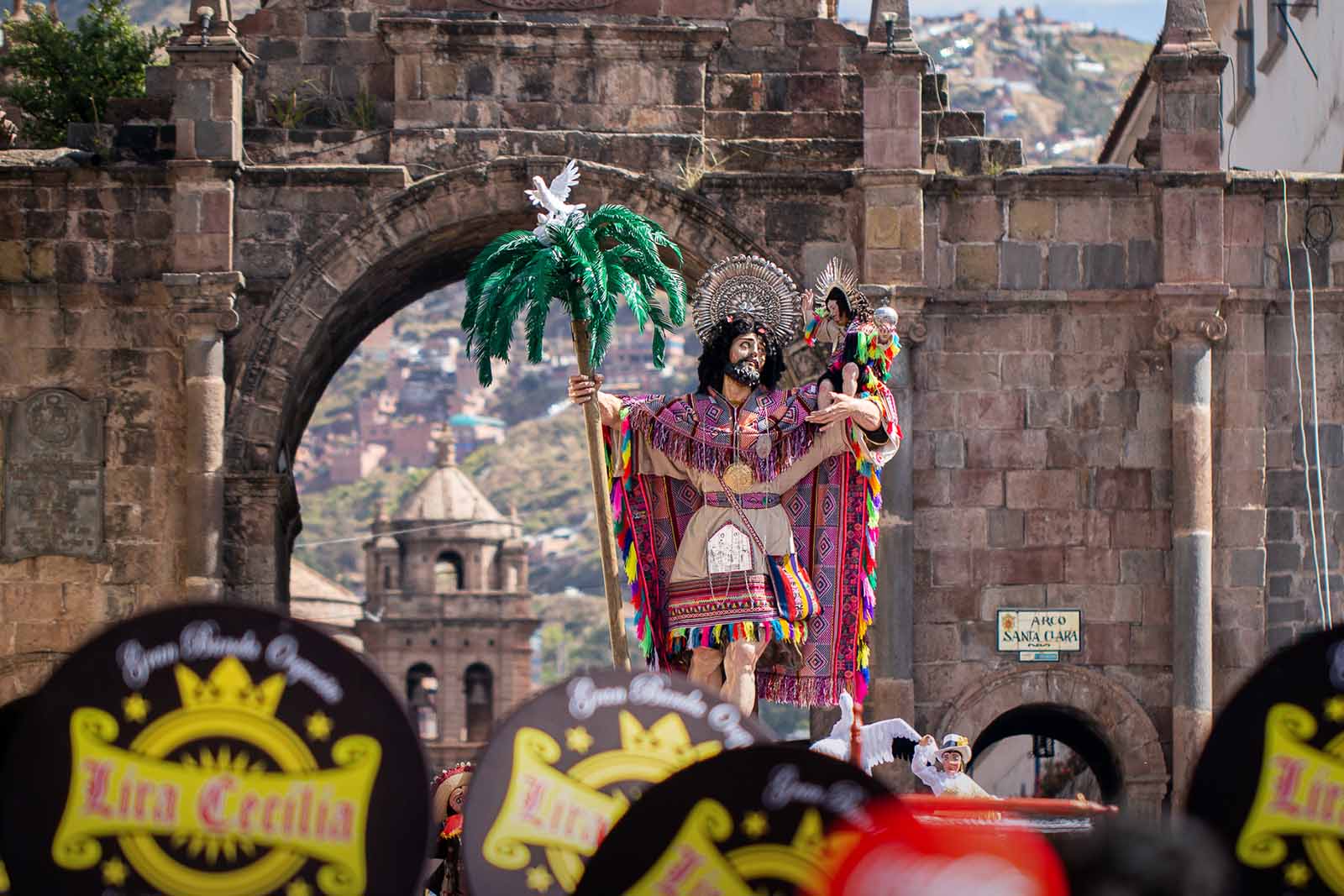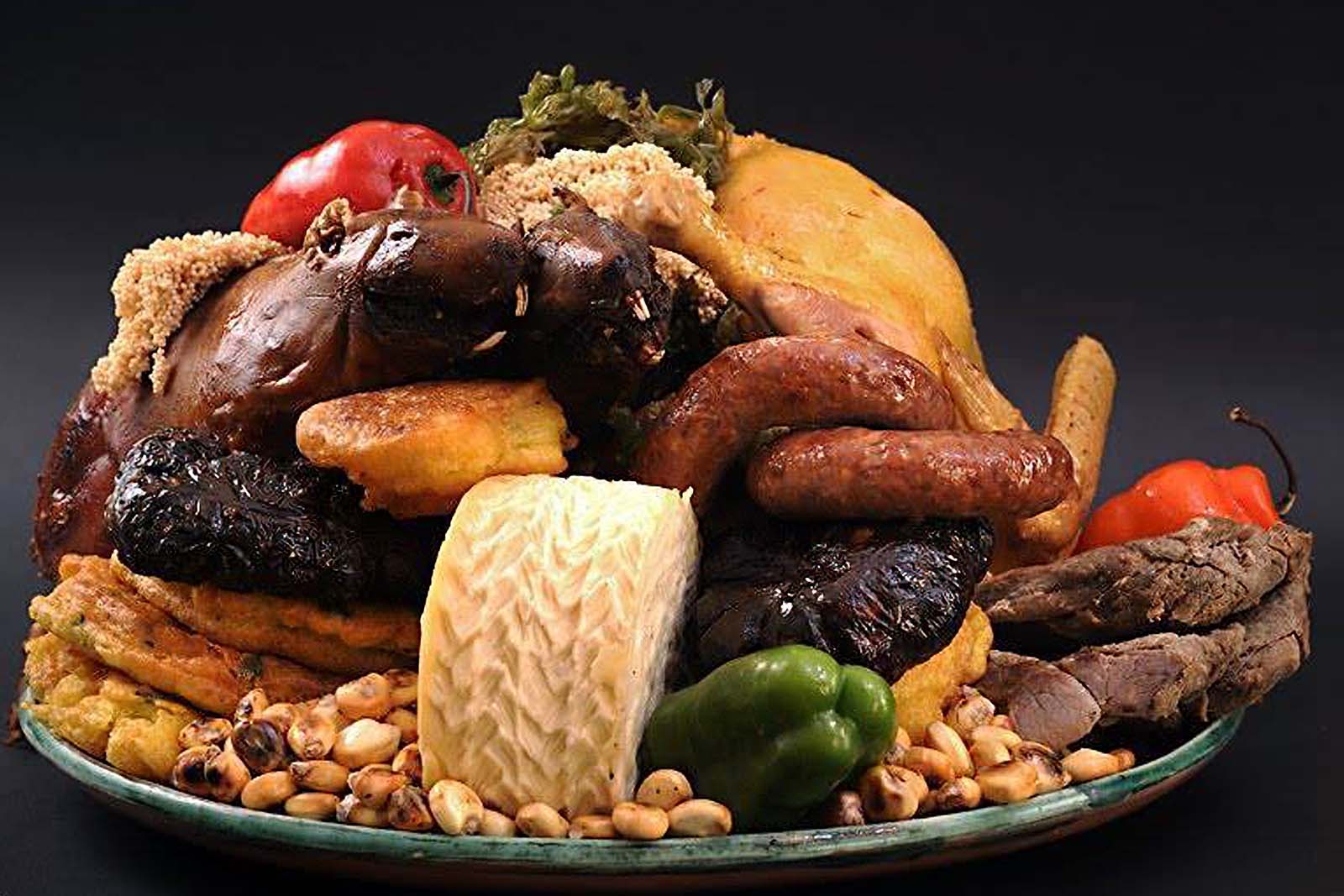El Corpus Christi, declarado Patrimonio Cultural de la Nación en 2004, es una de las tradiciones más emblemáticas y participativas de Cusco y de Perú.
With over 400 years of history, the Corpus Christi festival in Cusco blends the Catholic faith with deep-rooted Cusqueñan culture, standing out as an event of great religious, cultural, and social significance.
The Corpus Christi Festival
This year, the festival began on Sunday, May 19, with the traditional Bajada de Pentecostés and the procession of the Mamacha or Virgin of Bethlehem and Patriarch Saint Joseph. The revered image of the Virgin of Bethlehem traveled through the streets of Cusco from the Bethlehem temple to the Santa Clara convent, where it was welcomed by Patriarch Saint Joseph, marking the start of a series of solemn and festive events.
On May 29, the "Entrada de Corpus" highlighted the participation of 15 revered images from various parishes, parading through the main streets of the Imperial City before entering Cusco Cathedral. The massive turnout of devotees reflects the deep faith and rich cultural tradition of Cusqueñans.
The main day of Corpus Christi was on May 30. The day began with a special liturgical celebration led by the Archbishop of Cusco. After the mass, the procession of the images of saints and various advocations of the Virgin Mary, including the Virgin of the Immaculate Conception and the Virgin of Bethlehem, began.
What is the Corpus Christi route?
At 10:30 a.m., the Archbishop holds a mass and a Te Deum on the steps of the city's main temple, followed by the Corpus Christi procession with the 15 revered images. After passing through Cusco's Plaza de Armas, the images return to their original temples, concluding one of the most impressive and participatory processions in Cusco.
Extra Date | The images remain in the Cathedral for a week until the Octave of Corpus, which this year will be celebrated on Thursday, June 6.
Why is this tradition important?
The arrival of Spanish conquistadors in Cusco brought about a fusion of traditions. The Spanish observed Inca ceremonies, where the mummies of the sovereigns were paraded as a prelude to Inti Raymi. These practices were replaced with religious images of Christ, saints, and advocates of the Virgin Mary, giving rise to Corpus Christi, which has become one of Cusco's leading festivals.
Culture and gastronomy
Corpus Christi is not just a religious manifestation; it is also a cultural and gastronomic event. During the celebrations, Cusqueñan cooks prepare "chiriuchu," the emblematic dish of Cusco's festivities. This feast includes guinea pig (cuy), chicken, toasted corn, cheese, dried meat, sausage, tortilla, seaweed, and rocoto pepper.
The Corpus Christi festival in Cusco strengthens the cultural identity and faith of Cusqueñans and attracts tourists from around the world, promoting economic development and cultural exchange.
Corpus Christi is undoubtedly a celebration that keeps Cusco's history and tradition alive, uniting the community in an expression of faith and culture that renews each year.
Read More | Corpus Christi in Cusco.



